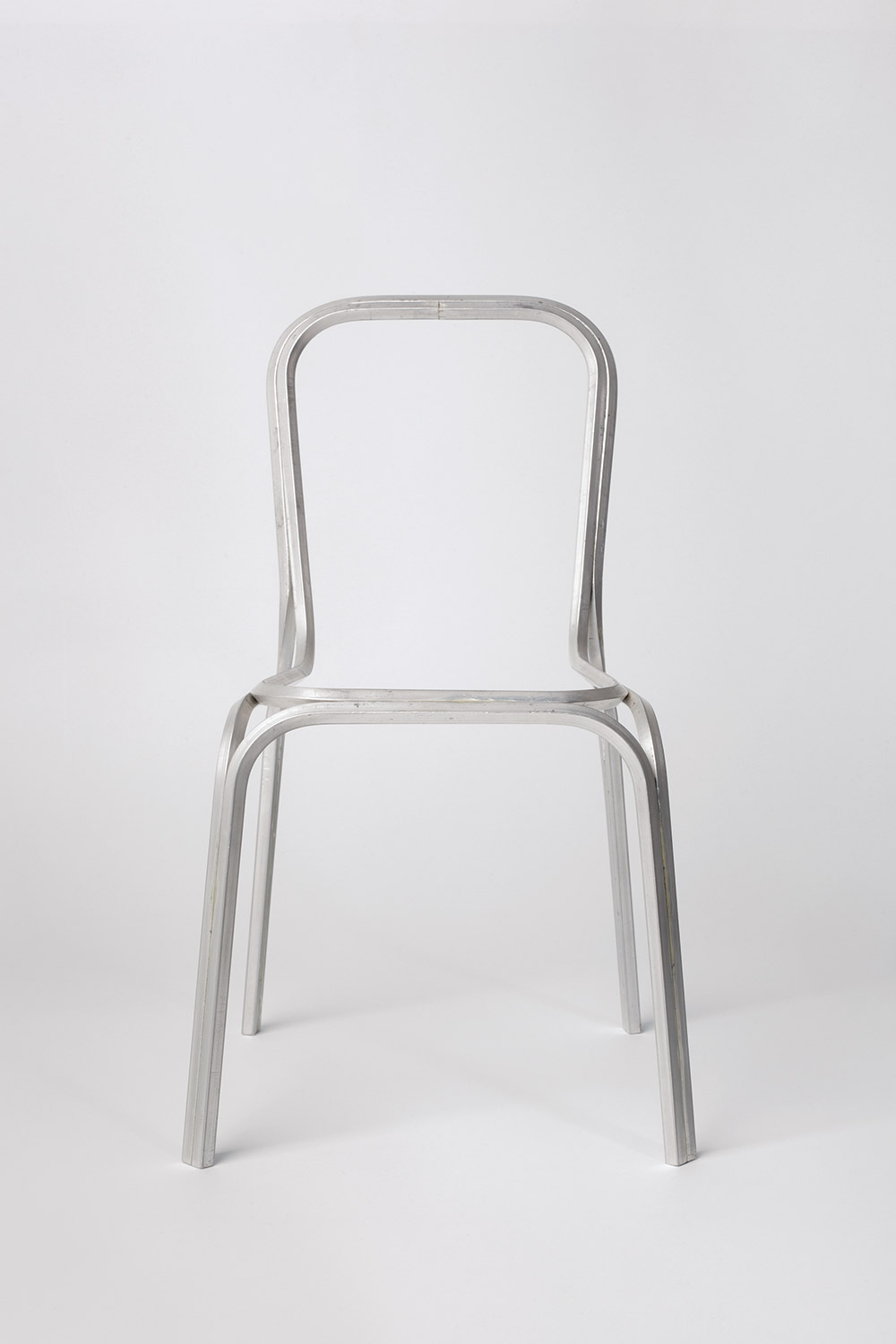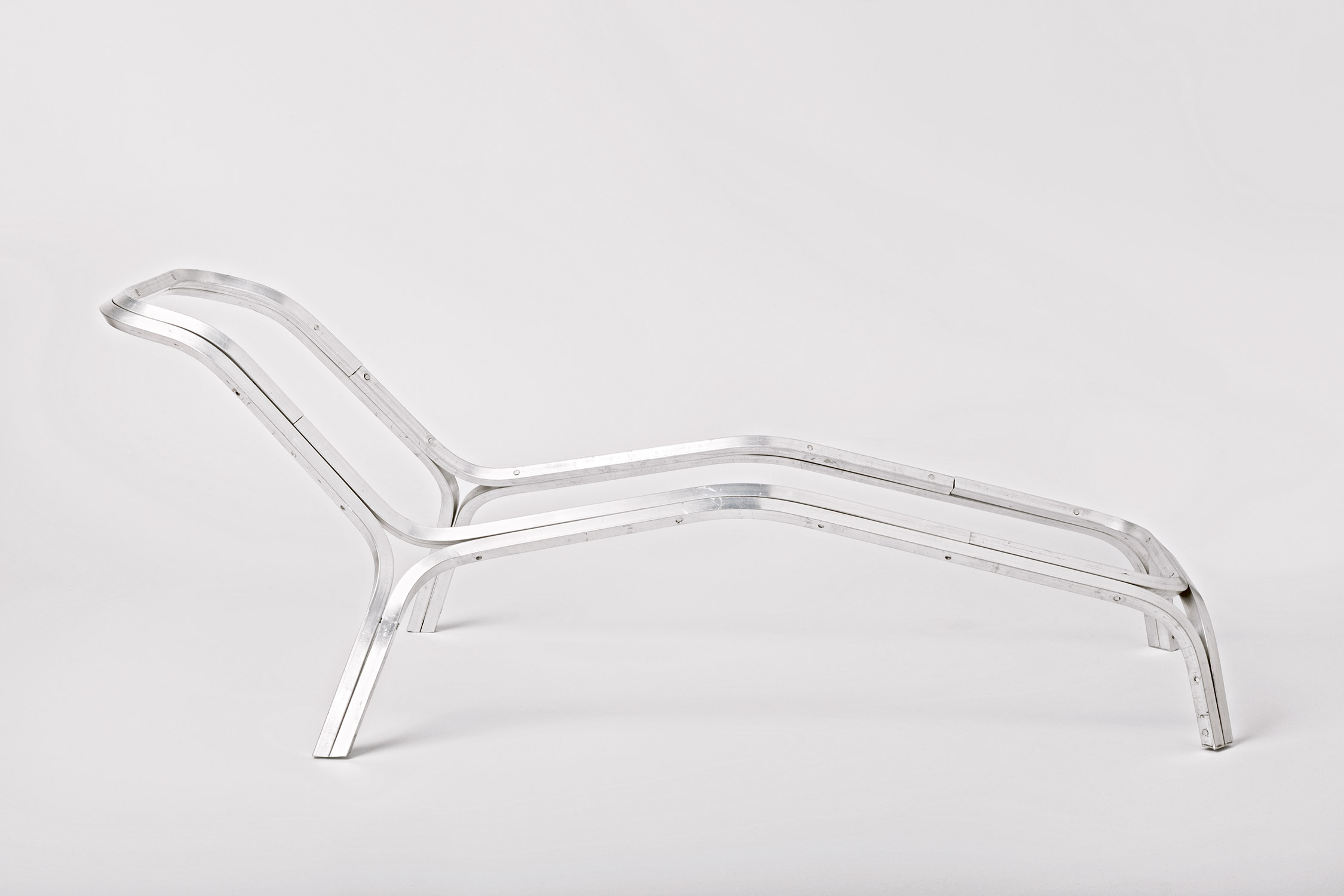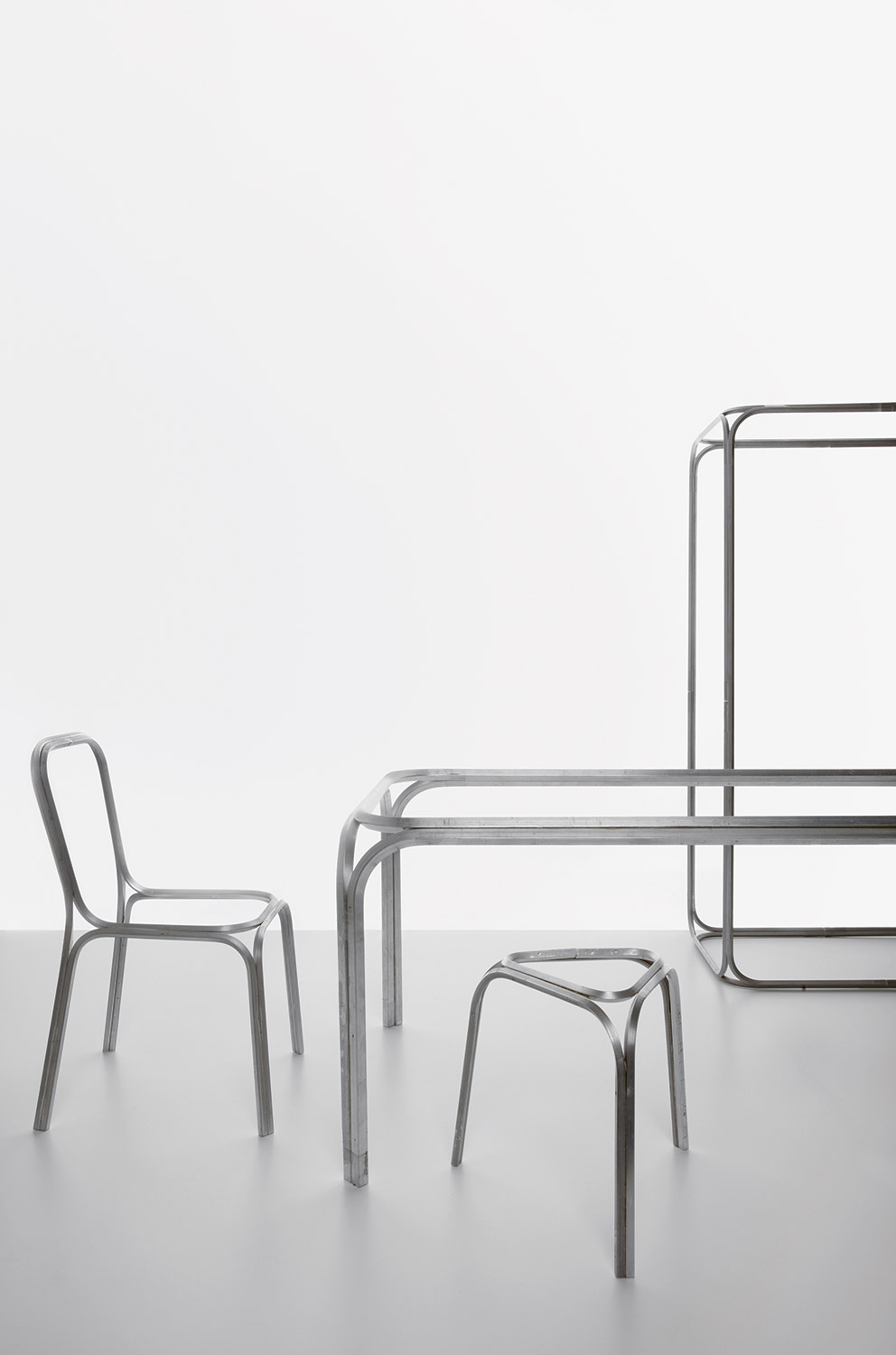AL
Möbelstudie für
Furniture study for
Thonet
2000
„Das Prinzip der Möbelkonstruktion wird zu allen Zeiten durch das Problem bestimmt, vertikale und horizontale Teile zu verbinden“ (Alvar Aalto). Bei aller Kompliziertheit dieser Verbindungen beschränken sich viele Stühle auf ein (Konstruktions-)Thema: Mal wird der Stuhl als Hocker mit Lehne gesehen, mal als durchgehendes Rückenteil mit angefügtem Sitzwinkel, mal als durchgehendes S beim Freischwinger, oder als gerüstartiger Turm mit zwei langen und zwei kurzen Beinen und verbindenden Sprossen. Kann der Vorrang eines Teils über das andere zugunsten einer Vieldeutigkeit und Gleichberechtigung aufgehoben werden?
„Ambivalenz“ stand neben einer ersten Skizze zu AL: Hier gehen die Teile eines Stuhlrahmens ineinander über, jede Verzweigung mündet wieder in das gleiche, doppelt quadratische Profil. Daneben wird der Umriss der abstrakten Strichzeichnung mit zwei Linien dargestellt, die in ihrem Verlauf unterschiedliche Verbindungen eingehen. Freilich stellt auch dies eine Interpretation dar, nämlich die eines Stuhls als Gerüst aus Stäben, dessen Sitz und Lehne mit einer Fläche gefüllt wird. An die Stelle einer tektonischen Fügung von linearen Bauteilen tritt nun deren fließender Übergang innerhalb einer homogenen, räumlichen Struktur. Das Bild sich kreuzender Autobahnen illustriert, wie Fahrspuren in jede beliebige Richtung weiterführen – in einem nicht hierarchischen System.
Michael Thonet hatte mit seinen frühen Schichtholzexperimenten und den späteren Bugholzmöbeln genau diesen Weg beschritten. Da seine innovativen Verfahren heute teure Handarbeit bedeuten, treten nun quadratische Aluminiumprofile an die Stelle von Buchenholz. Setzt man drei Einzelbögen zu einer räumlichen Ecke zusammen, bilden ihre x-, y- und z-Achse den charakteristischen Knoten. Während das Innere des Knotens frei bleibt, bündeln sich die gerade verlaufenden Abschnitte zu einem rechteckigen Querschnitt. Dieses Prinzip der räumlichen Ecke lässt sich auf weitere Sitzmöbel, aber auch auf Tische und größere Kastenmöbel anwenden.
“The basic problem in furniture design, both historically and practically, is the connecting element between vertical and horizontal parts” (Alvar Aalto). Despite the complexity of these connections, many chairs are limited to one (design) theme: sometimes the chair is conceived as a stool with a backrest, sometimes as a continuous back piece with a seat appended to it, sometimes as the continuous S of a cantilever chair, or as a scaffolding-like tower with two long and two short legs plus connecting rungs. Can the primacy of one part over the other be eliminated in favor of an ambiguity and equality among all the parts?
The word “ambivalence” was written next to one of the first sketches of AL: In it, the parts of a chair frame merge into one another; each branch leads back into the same doubled-up square section. In addition, the figure of the abstract line drawing is depicted with two lines that form varied connections along their path. Of course this also represents an interpretation, namely that of a chair as a framework of square tubes, whose seat and back are each filled with a surface. In place of a tectonic merging of linear components they now undergo a fluid transition within a homogeneous spatial structure. The image of intersecting highways, with traffic lanes that continue in any and all directions, illustrates this concept of a non-hierarchical system.
Michael Thonet had taken this very path with his early laminated wood experiments and later bentwood furniture. Since his innovative techniques require manual labor that is expensive today, square aluminum sections now replace the beechwood. By combining three separate bent pieces into a spatial corner, their x, y, and z axes form the characteristic node. While the center of the node remains open, the square sections unite along the straight segments to form a rectangular cross section. This principle of the spatial corner can also be applied to other types of seating, as well as to tables and larger cabinetry.
Weiterlesen /
Read more
Text einklappen /
Close text




AL-Stuhl, Modell
AL chair, model

AL-Liege, Modell
AL sun lounger, model

Autobahnkreuz
Highway interchange

Fügung der Bauteile
Composition of parts

Stuhl, Tisch, Hocker, Schrank, Modell
Chair, table, stool, cabinet, model
